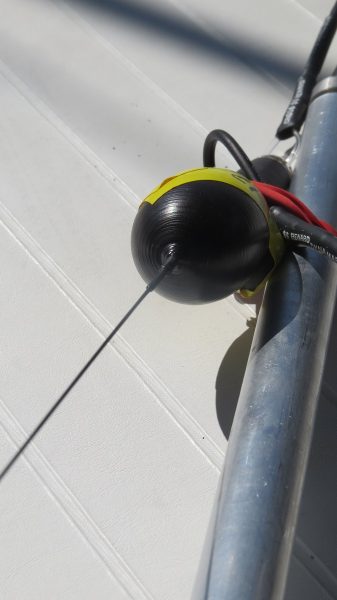The site of a billfish coming up into a spread of teasers, happily skipping across a deep blue ocean never gets old. Sailfish, named for their extremely tall dorsal fin and a sword-like bill, will light up in a purple hue when excited.
They generally come into the teasers — which are hookless lures that trail behind the boat to attract sailfish — gracefully swatting them with their bills. This gives you time to place your bait in front of it. A marlin looks similar to a sailfish, but they’re much larger. They also almost always bust through the ocean like a linebacker blitzing the quarterback, or a bull tearing through the ring at Christmastime in Zapote. The adrenalin rush of catching one of these fish is always rewarding, but it’s even better when you know you’re helping science learn a little more about these fish.
I recently helped a group of scientists, led by Dr. Larry Crowder from the Hopkins Marine Station at Stanford University, catch fish to better understand and manage ocean pelagics like sailfish and marlin.
It was a good day for fishing and science. There was enough fish for the scientists to be selective with the ones they tagged. They placed satellite tags in three marlin and nine sailfish They chose the healthiest looking fish to place the tags. The tags cost around $4,000 a piece, so it pays to be careful. The tags they use have a “double loop” system which limits the drag in the water and keeps the tag close to the body. It’s black so predator fish won’t be attracted to it.
FECOP’s Henry Marin brings a study subject on board
The team several scientists from Stanford University, tagging experts and several local captains. The team of scientists were here to start-up a four-year project called Dynamic Marine Animal Research (DynaMAR) and are placing satellite tags on marlin and sailfish along several points off the Pacific coast.
The tags will gather information on movement, location, depths traveled and water temperatures. They are set to pop off at intervals of, six, nine, and 12 months and float to the surface. Then an antenna will transmit the data to a satellite. Scientists will compare that data from other sources the fish have traveled to.
They are especially interested in what these fish are doing during an El Niño period. During this period, the water warms and changes the upwelling of nutrients. The fish’s normal patterns change and they become more lethargic.
They plan to tag fish every month of the year in future visits and hope to have data on nearly 150 billfish after they’re finished.Dr. Crowder says a similar study on swordfish of the coast of California changed the thinking on Marine Protected Areas (MPA’s).

“Fish don’t always stay in the same place, especially pelagic species, they are always on the move,” Dr. Crowder said. “What we found was at times the fish and marine life we were trying to protect were not even in the area we were protecting”
With the information they gathered from the swordfish study, they were not only able to predict where the concentration of swordfish would be, but more importantly, they could predict where the highest concentrations of bycatch would be. In that case, it was blue sharks and Leatherback turtles, a highly endangered marine reptile.
That study led to the creation of Mobile Marine Protected Areas. By predicting the location of bycatch, areas could be closed to commercial swordfishing for a period and changed with the movements of the bycatch. This led to better conservation effort while allowing commercial fisherman a larger area to fish.
It will be interesting what we learn in Costa Rica.
Todd Staley ran a fishing sport operations on both coasts of Costa Rica for over 25 years. He recently decided to take some time off to devote full-time to marine conservation and was the communications director at FECOP.






